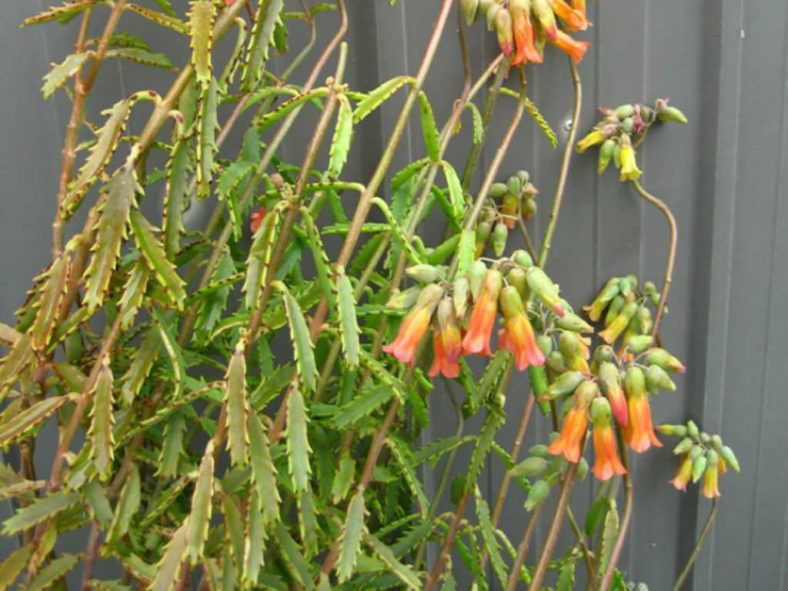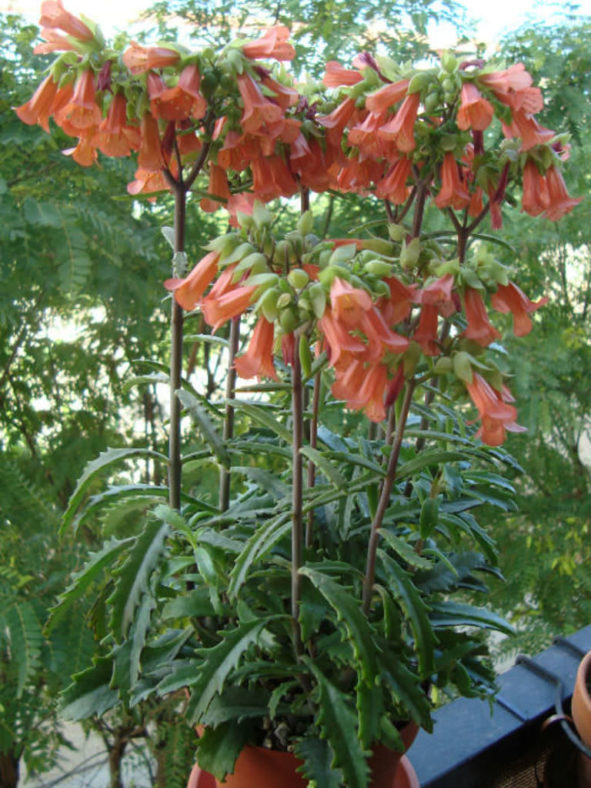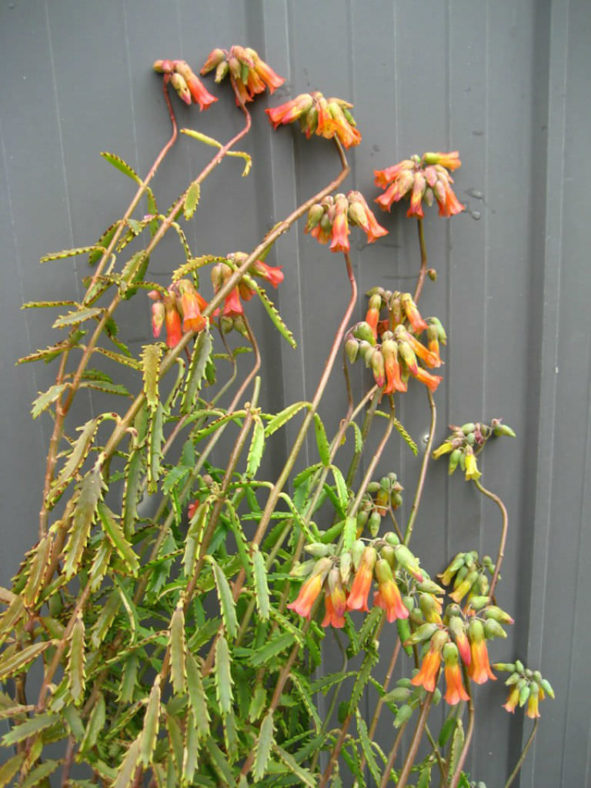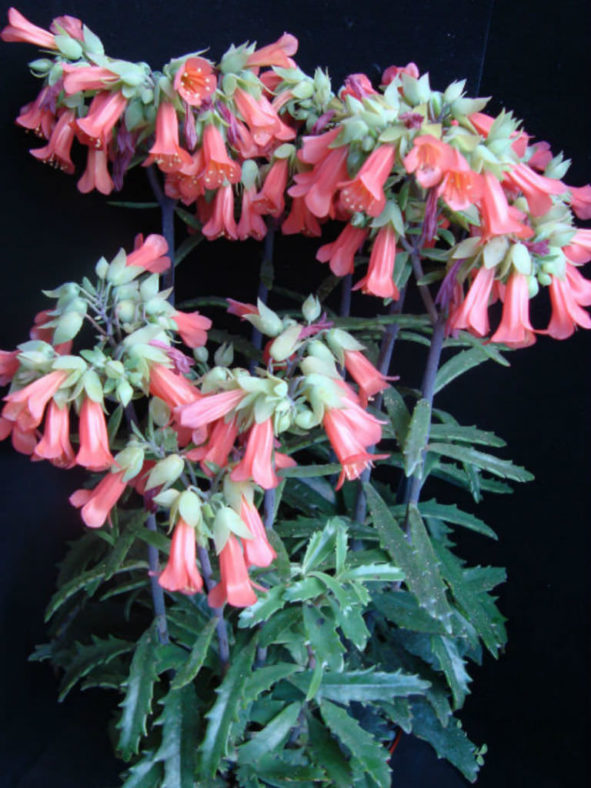Scientific Name
Kalanchoe ×richaudii Desc.
Synonyms
Kalanchoe richaudii
Scientific Classification
Family: Crassulaceae
Subfamily: Sedoideae
Tribe: Kalanchoeae
Genus: Kalanchoe
Etymology
The specific epithet "richaudii (rih-OW-dee-eye)" honors Philippe Richaud, a French explorer of Madagascan xerophytic vegetation, who brought this plant to the attention of Kalanchoe authority Bernard Descoings.
Origin
Kalanchoe ×richaudii is native to Madagascar. It is a natural hybrid that results from a cross between Kalanchoe rosei and Kalanchoe delagoensis.
Description
Kalanchoe ×richaudii is a succulent plant with a simple erect stem and fleshy leaves that produce plantlets mostly from the axils rather than the tips or margins. The elliptical, coarsely serrated leaves of Kalanchoe rosei combine with the cylindrical, camo-colored leaves of Kalanchoe delagoensis to produce an intermediate with pastel pinkish-blushed, linear, serrated leaves. The plantlets are contrasting pale green and are larger and more luxuriant than the plantlets of other members of the Bryophyllum group.
Like both parents, the pendent tubular flowers are also relatively large and showy compared with the foliage.

Hardiness
USDA hardiness zones 10a to 11b: from 30 °F (−1.1 °C) to 50 °F (+10 °C).
How to Grow and Care
Kalanchoe care is minimal, but be cautious about light levels. Intense sunlight can burn the tips of the leaves. When growing Kalanchoes, place pots in partial sun to light shade areas.
The flowering varieties are highly rewarding for their colorful and long-lasting flowers. They prefer bright, sunny locations, especially in the growing season. Water moderately from fall to winter when the growth is most active. Reduce watering during the hottest summer months when the plants are mostly dormant and winter when the growth slows significantly. Let the soil surface dry out between waterings. Watch the fleshy leaves for signs of water distress. An ordinary potting soil mix is fine. Feed bi-weekly during the growing season with a liquid fertilizer, or use slow-release pellets.
These small plants require repotting every few years. When repotting, take additional care in handling, as the leaves are somewhat brittle and can snap easily. Clay pots work exceptionally well for planting Kalanchoes. Ensure pots drain well and saucers empty easily.
Learn more at How to Grow and Care for Kalanchoe.
Links
- Back to genus Kalanchoe
- Succupedia: Browse succulents by Scientific Name, Common Name, Genus, Family, USDA Hardiness Zone, Origin, or cacti by Genus
Photo Gallery
Click on a photo to see a larger version.


